
New technologies will change our lives in countless ways in the coming years and decades. While technological innovations and their consequences are often unforeseeable, many predictable changes coming in the very near future will be the result of drone technology.
24/7 Wall St. has compiled a list of the significant ways drones may dominate our lives in the coming years. In some areas, drones will likely lead to more jobs or better jobs, while in others it will likely eliminate some jobs. Further, some consequences and aspects of drone technology and future drone use are unsettling.
[in-text-ad]
While militaries have been using drones as surveillance and combat tools (among other functions) for some time now, recently industries as diverse as agriculture, oil and gas exploration, telecommunications, and delivery services have increased their use of drones.
Click here to see the 17 ways drones are changing the world.
According to Goldman Sachs Research, businesses are just beginning to explore commercial applications of drones. The researchers estimate that by 2020 a range of industries, including construction, clean energy, cinematography, and journalism, will all be tapping the potential of drones.
The applications of drones are almost endless. Operators can help identify a wildfire’s hot spots, inspect oil and gas pipelines, monitor crops, create maps, and so on. Goldman Sachs believes the broader drone market opportunity over the next four years could be a $100 billion opportunity, helped by growing demand from the commercial and civil government sectors.
The White House Office of Science and Technology Policy projected in 2016 that the commercial drone industry will add $82 billion to the economy in the next decade. The office also expects the drones market will help to create 100,000 jobs by 2025.
The increased use of drones has already created some problems as regulations are still catching up to the new technology. For one, there have been many reports in recent years of near-collisions between drones and aircraft. This led to the creation of the equivalent of an air-traffic-control system for drones. AirMap, a recent California startup, offers a real-time mapping service that also helps drone operators avoid both permanent and temporary no-fly zones. Microsoft Ventures and other companies invested $26 million in the company in 2017.
One of the biggest changes will likely be in the realm of geopolitics. While different defense branches of the United States were first to use drones, today several dozen countries have at least one military drone. According to some predictions, within 10 years, nearly every country in the world will be capable of developing military drones.
Drones may also result in significant changes in state and local law enforcement. Going forward, drones may be increasingly used in surveillance and crime prevention. However, police drone use also gives rise to a number of difficult questions concerning civil liberties, personal privacy, and potential weaponization by police departments and private security groups.
For better or worse, drones will play increasingly significant roles in our lives.
These are the 17 ways that drones will dominate our lives in the coming years.
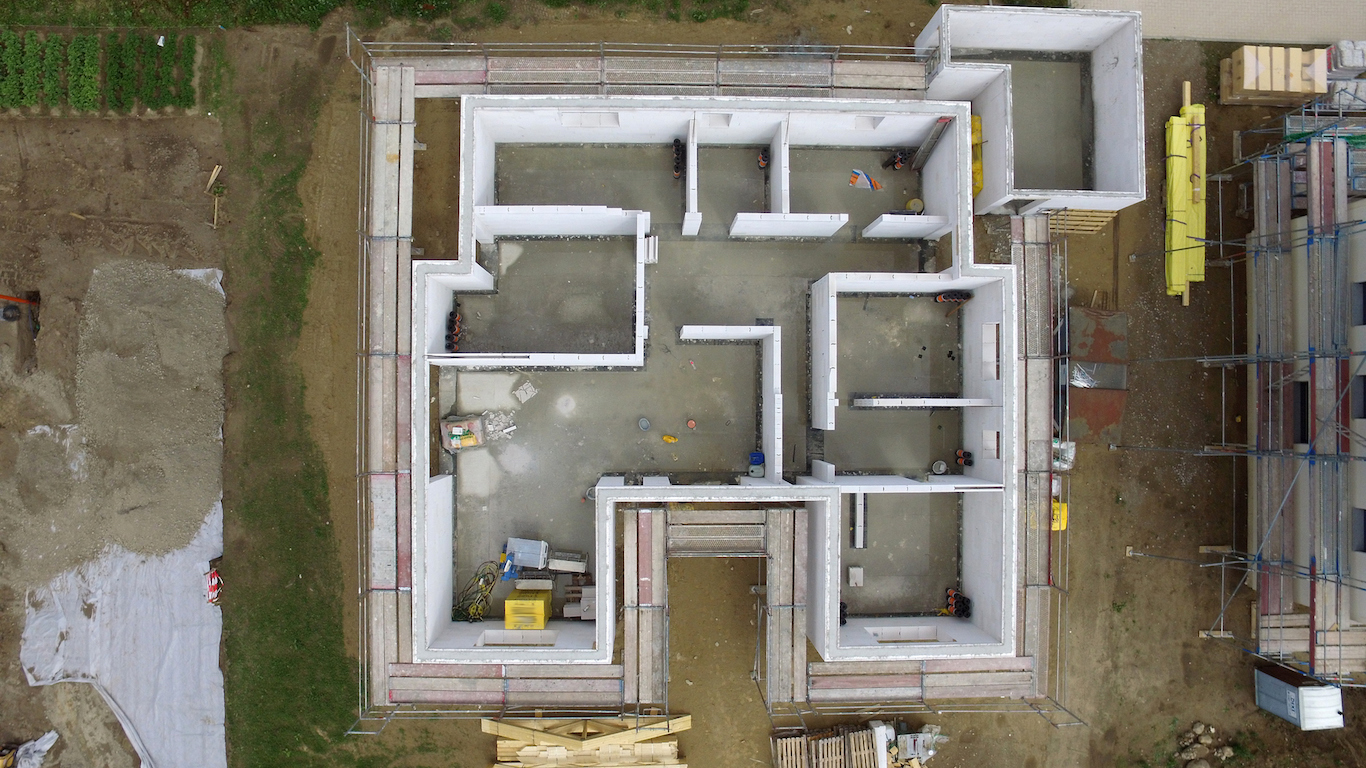
Source: Thinkstock
1. Realtors and builders
Consumers who have used Zillow (NASDAQ: Z) and other real estate sites to look for properties have probably already seen aerial photographs of homes taken by drones. More and more realtors are opting to use drones as a way to show properties. Builders are using them as well, typically to help their salespeople. It is not uncommon for properties to have promotional videos, shot with drones, for potential buyers unable to see the locations in person.
Drones are used to inspect infrastructure projects, including skyscrapers, bridges and more — during the building phase and for maintenance purposes. Such use will likely only increase in the coming years.
[in-text-ad]
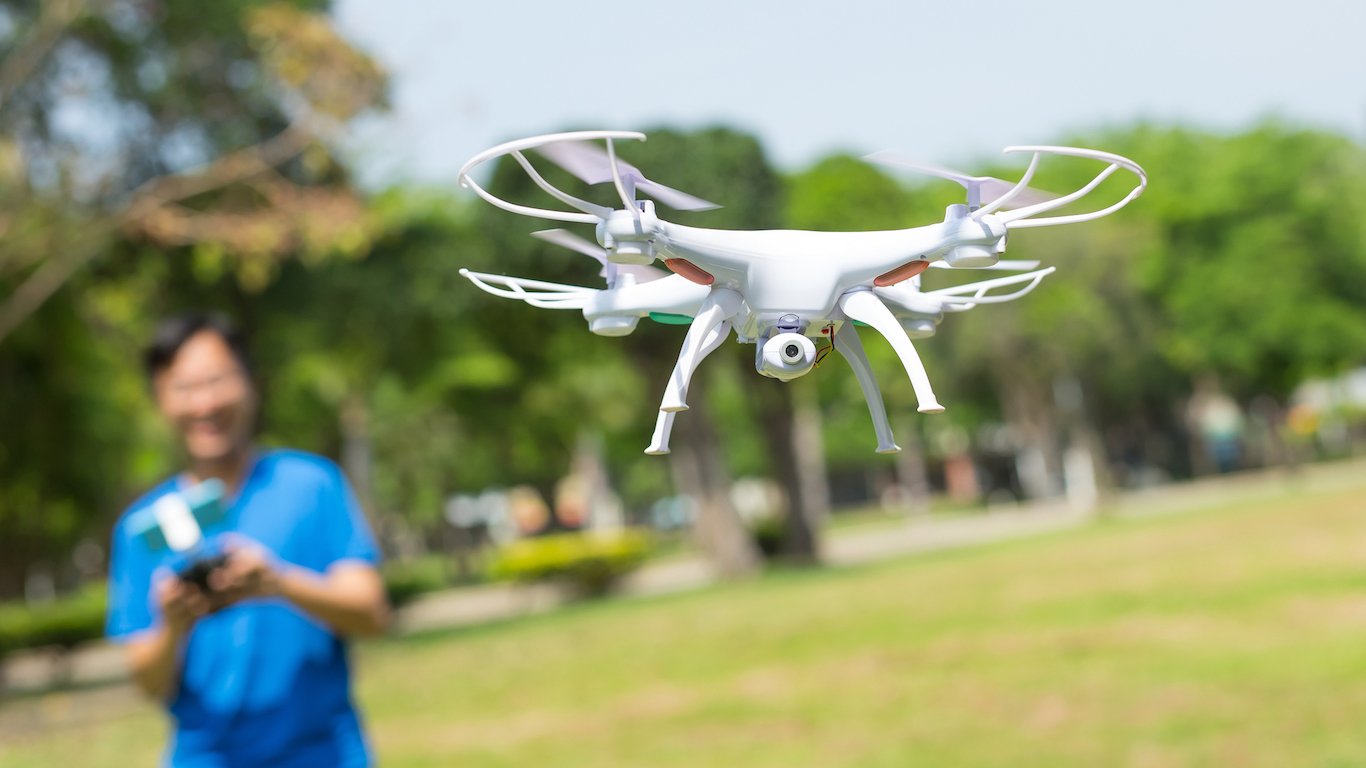
Source: Thinkstock
2. Consumers and hobbyists
Consumers and hobbyists have already started using drones. Goldman Sachs expects shipments of consumer drones to reach 7.8 million in 2020, generating $3.3 billion in revenue — a significant growth from the 450,000 shipments in 2014, which generated $700 million in revenue. Official FAA rules covering drones were announced in the summer of 2016. Though most of them apply to commercial drone flights, a few are relevant to consumers.
Drone users also have their own official sports league. Started in 2012, the Aerial Sports League hosts drone fighting and racing events. Over the last two years, the ASL has attracted half a million spectators to live events.
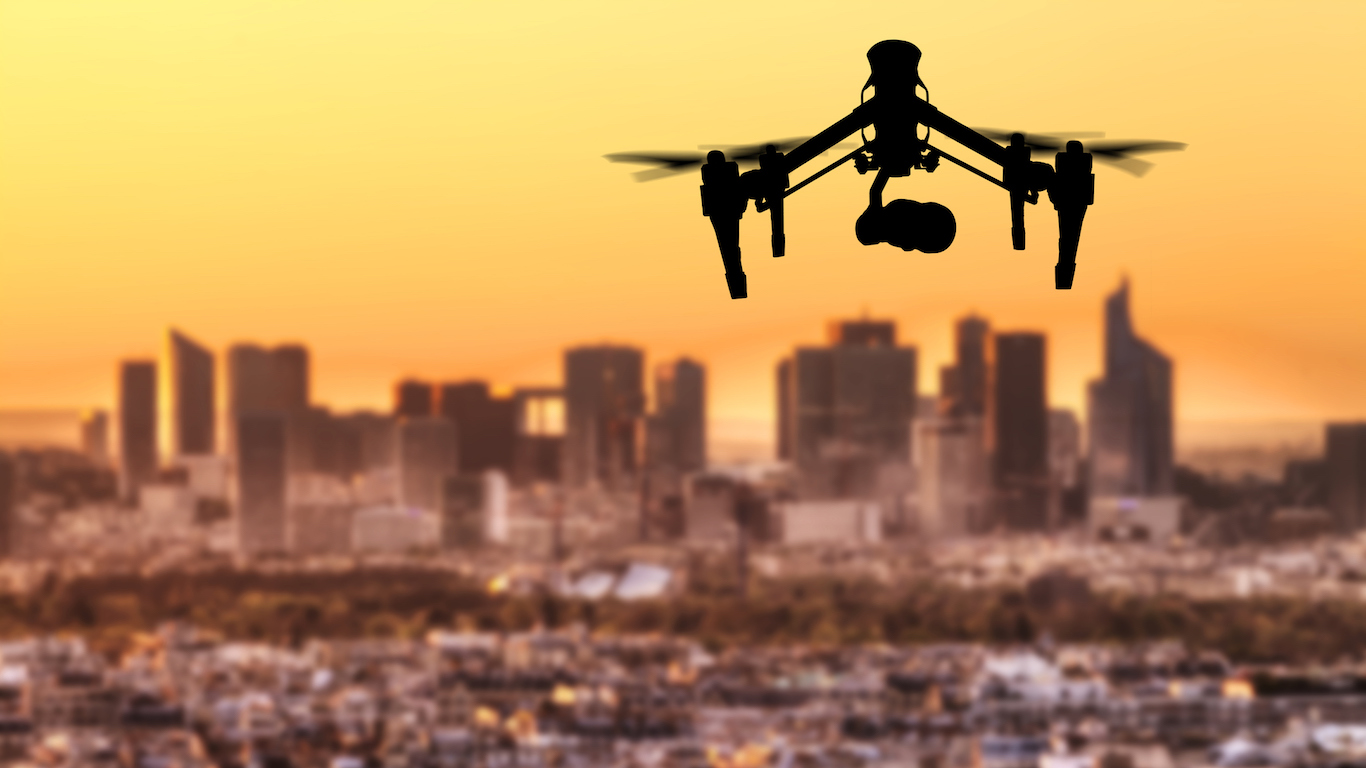
Source: Thinkstock
3. Journalism
In the field of Journalism, drone use to help gather news will likely increase. Reporters and journalists are now able to review video footage in hard to reach areas. Still, as drones pose serious privacy concerns, several laws have been enacted to help protect personal privacy. For example, flying a drone to film celebrities on their properties is illegal, but using drones to cover protests or public live events of any sort may be fair game, subject to relatively few restrictions.
In addition, citizen journalists can also use drones to cover live news — and with far fewer limitations than a smartphone alone.
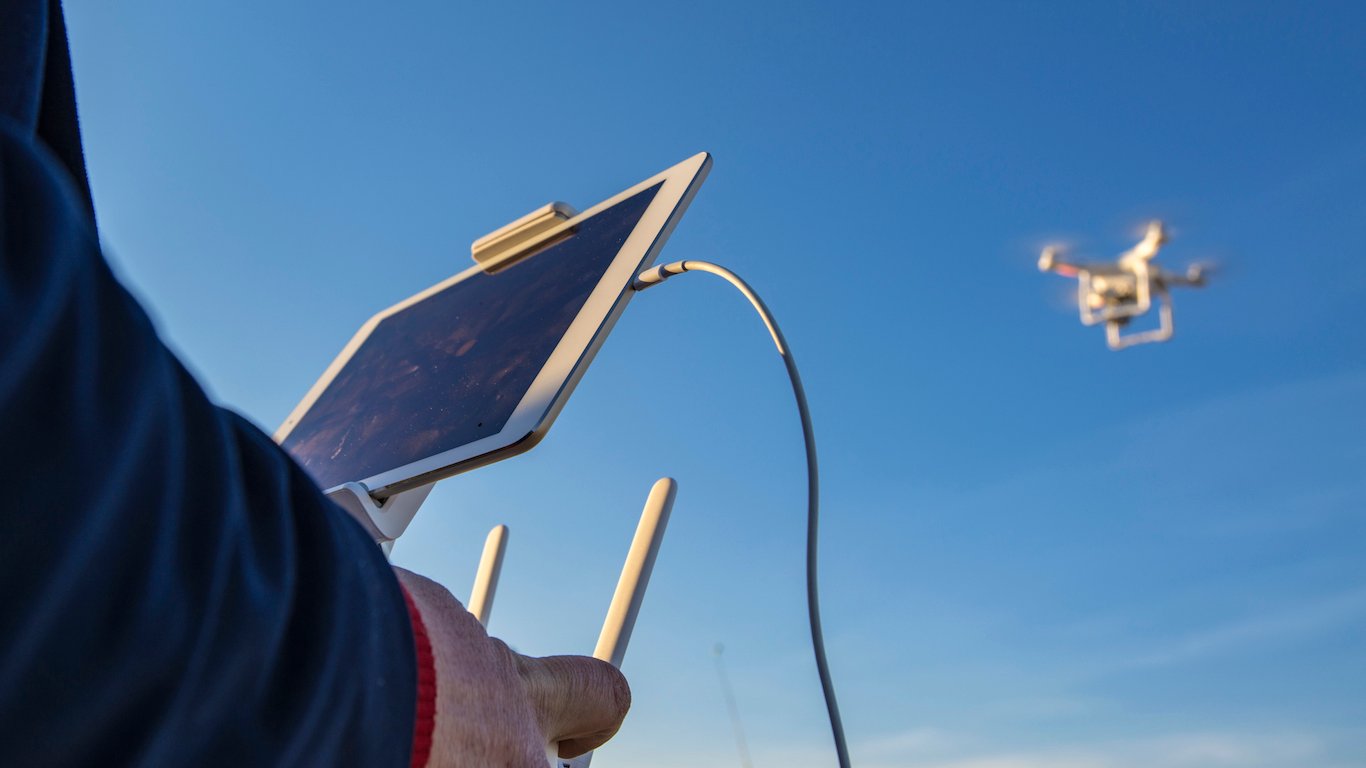
Source: Thinkstock
4. TV and movies
In TV and movie filming, drones can provide more options and at cheaper costs. Up until recently, movie and film producers had to hire helicopters or airplanes to get great aerial shots or panoramic views. However, not only are helicopters expensive, but also tracking shots over water or a birdseye view of a landscape can be tricky and expensive to film on helicopters.
By strapping a camera to a drone and filming remotely, however, drones provide a simple and much cheaper solution. Drones may also partially level the playing field for amateur filmmakers, as filming with drones is not an especially costly endeavor.
[in-text-ad-2]
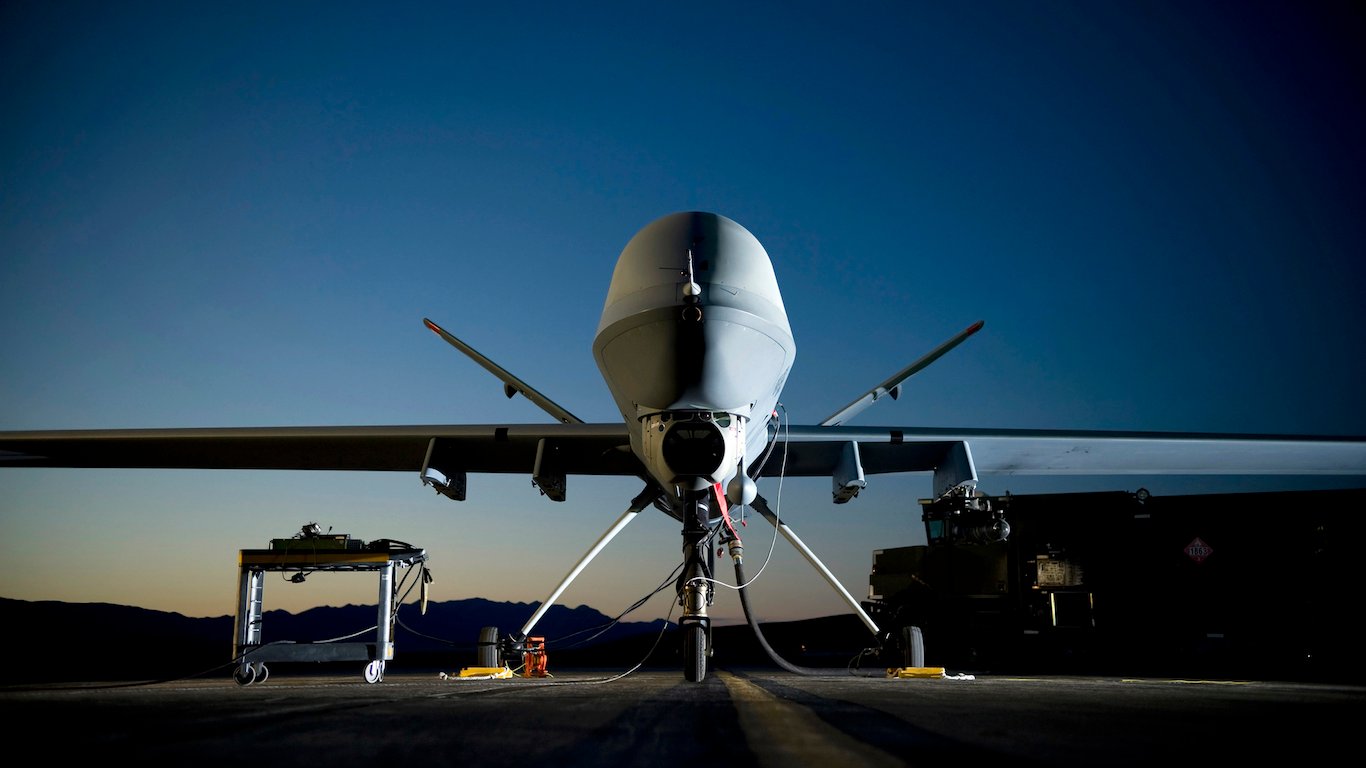
Source: Thinkstock
5. Military
The United States has used drones for military purposes — both offensive and defensive — for years now. While private and commercial use has expanded, Goldman Sachs projects that military is likely to remain the top spending class for drones for many years to come. Some military drones are as small as a bird, while a Predator drone from General Atomics can be the size of a small jet with advanced camera systems and remote missile delivery systems. The majority of military drones in use today are aerial — UAVs — although there are also ground-based UGVs and aquatic drones as well.
Research firm IHS has predicted that there will be 63,000 UAVs and 30,000 UGVs globally within 10 years.
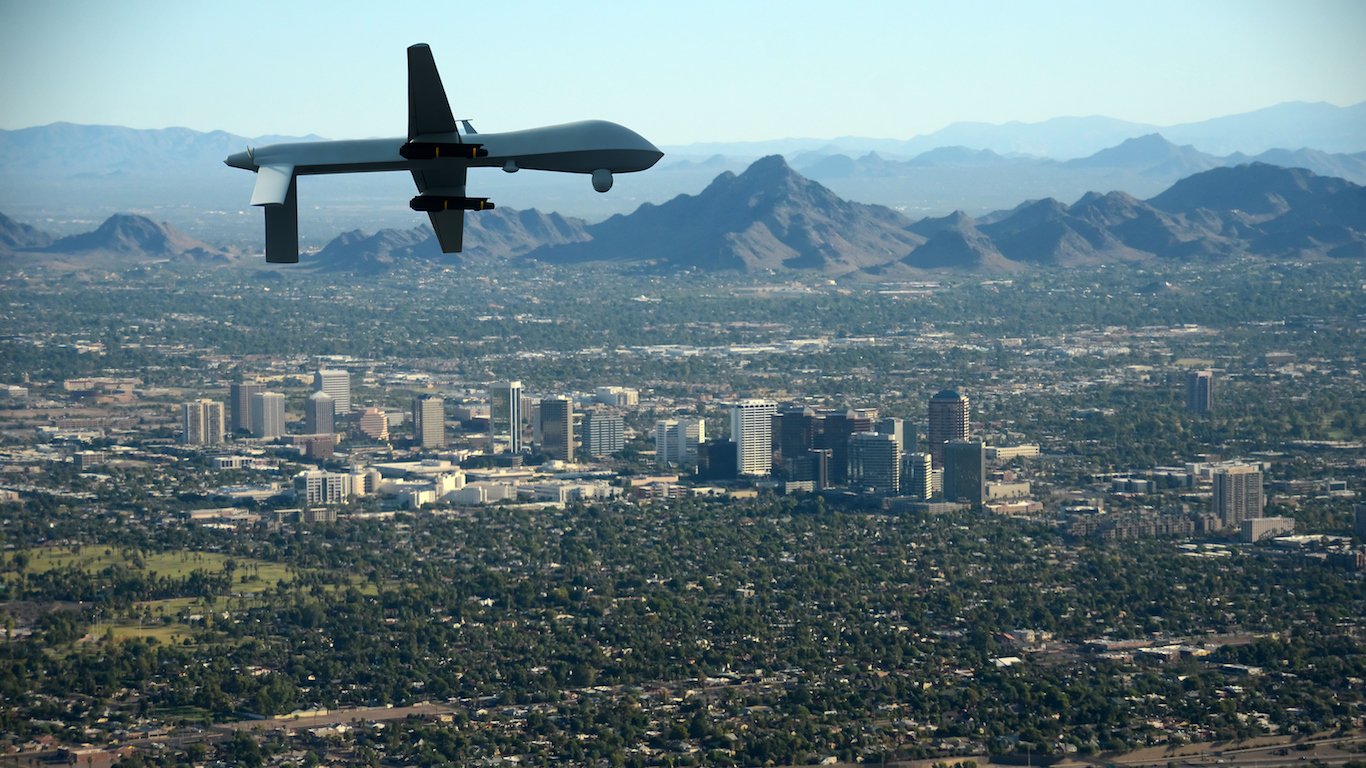
Source: Thinkstock
6. Police, law enforcement, and national security
Law enforcement agencies already employ drones for aerial or horizontal views, and their use will only increase in time. Drones can be a useful tool in searching for a suspect, identifying where criminals might be hiding, and identifying where hostages might be held. Police can also use drones is for monitoring crowds, riots, and traffic violators. Border patrol and police departments are already using drones to surveil multiple locations at once to prevent illegal border crossings.
The Department of Homeland Security has released guidance for state and local agencies using drone aircraft regarding the protection of privacy, civil rights and liberties. The American Civil Liberties Union has also recently released recommended safeguards for law enforcement when using drones to avoid violating civil liberties.
[in-text-ad]
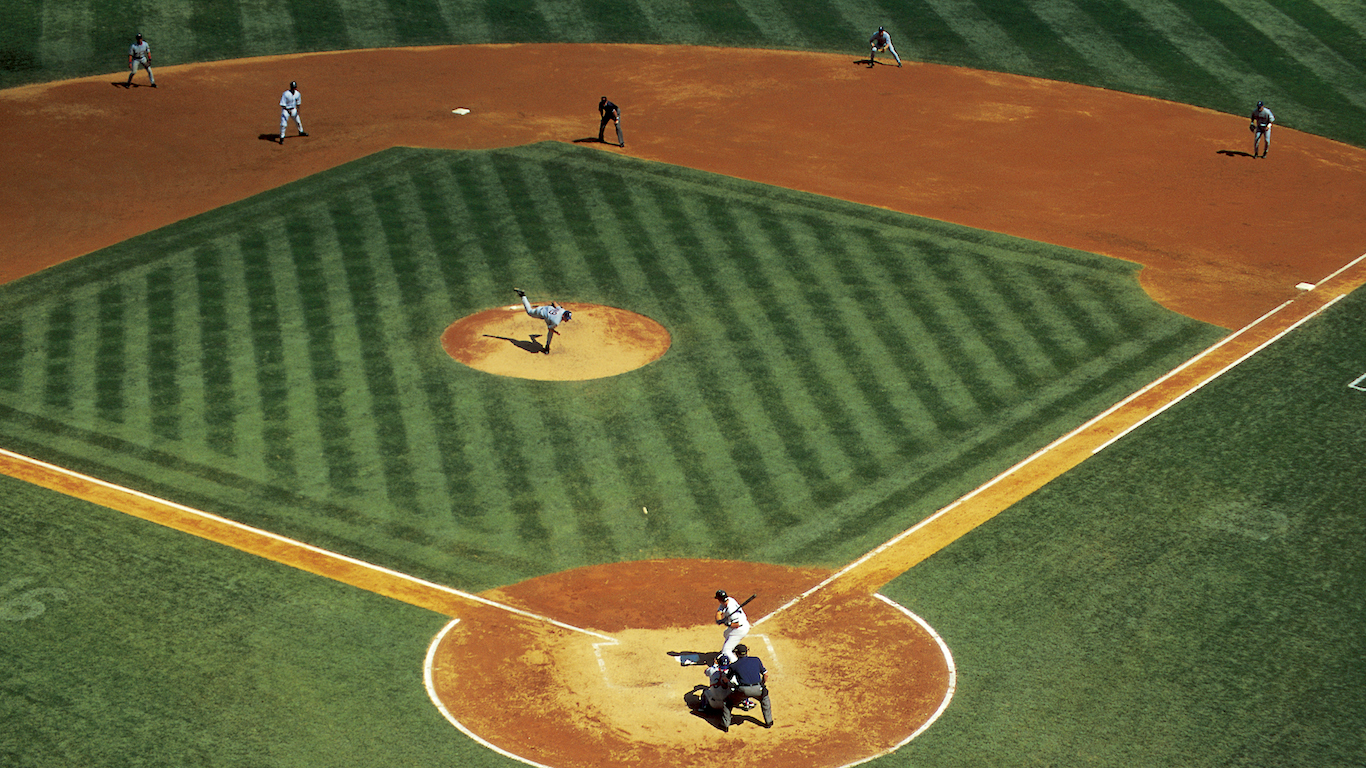
Source: Thinkstock
7. Sports
Wireline cameras and blimps at sporting events may soon be supplanted by drones. Fox Sports has already used drones on a limited basis. The Dallas Cowboys were an earlier adopter in using drones to provide a better experience for their fans. Drones can be used for unique filming angles and aspects of sporting events.
Whether it is following a football game in a stadium, surveying a golf course, or getting an aerial footage of a racing event, the potential use in sports coverage could be endless. During the Super Bowl halftime show, drones were used to provide a creative lighting display.
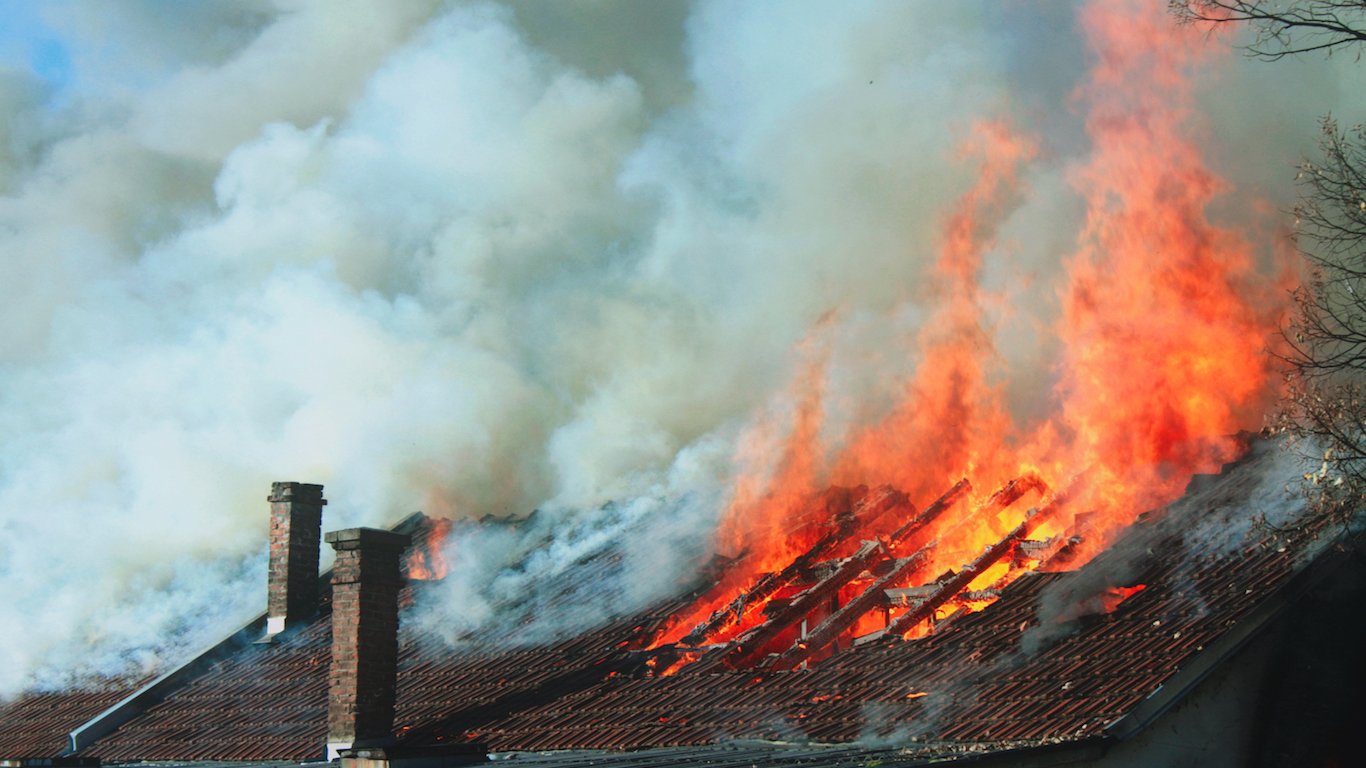
Source: Thinkstock
8. Fire and rescue
Drones or bomb disposal robots are already in use to disarm or destroy bombs found in public places, so as not to harm any humans. Sending a drone into a burning building is a similar concept. And if drones capable of carrying a person become more available in the years ahead, it would be easier to evacuate a building from the roof or windows.
Able to quickly cover large distances, searching for and rescuing people lost in the wilderness would be easier using a drone. Drone technology can also be used to fight forest fires. The use of drones for fire and rescue should only grow exponentially in use in the years ahead.

Source: Thinkstock
9. Cargo and parcel delivery
Consumers are going to see more drones waiting at the front door in the years ahead. This is not a new concept, but it has yet to take off. Amazon and other organizations have begun testing drone delivery of products. While there are limitations, drone delivery can be useful for smaller, light-weight packages and parcels for companies like Amazon (NASDAQ: AMZN), FedEx (NYSE: FDX), and UPS (NYSE: UPS). Perhaps even the USPS has a use for drones in an effort to cut costs for parcel delivery to rural areas where homes are more remote.
This effort has to get FAA approval, and as of the end of 2016, FAA rules instructed that drones stay in the line of sight of the operator. Drones cannot be flown at night, they must have a maximum altitude of 400 feet above ground level, and may not be flown over people. These rules are of course subject to change.
[in-text-ad-2]
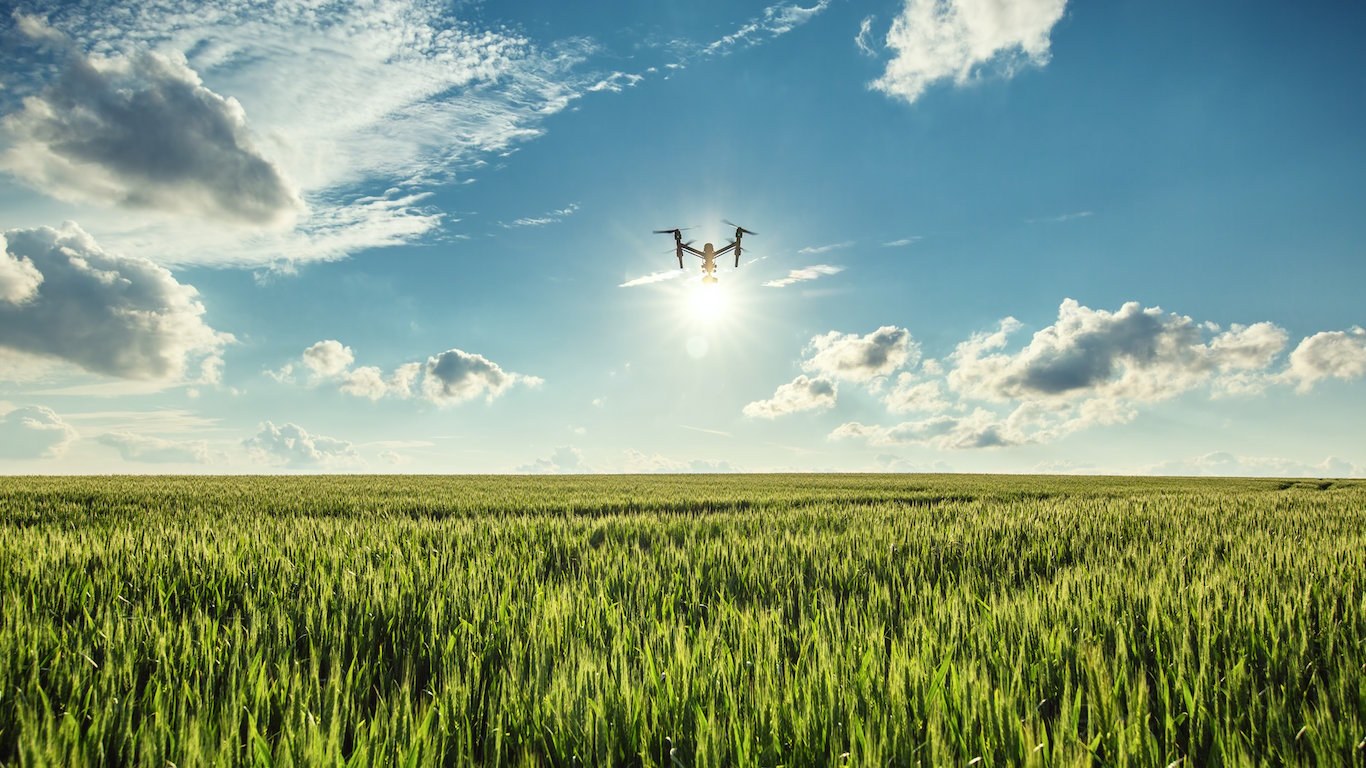
Source: Thinkstock
10. Farming and ranching
Drones can improve production efficiency of farming operations. Farmers can use drones to survey their land. Drones could be used to check up on crops in hard-to-reach areas and inspect multiple farming operations remotely. Drones are also capable of dusting crops — a use that could prove to be a major time and money saver.
For ranchers, locating lost animals can be time consuming, and failing to do so can be very expensive. Drones could make the process much more efficient and effective. Herd counting from an aerial photo could also be much easier than having to physically rounding up an entire herd into smaller areas.
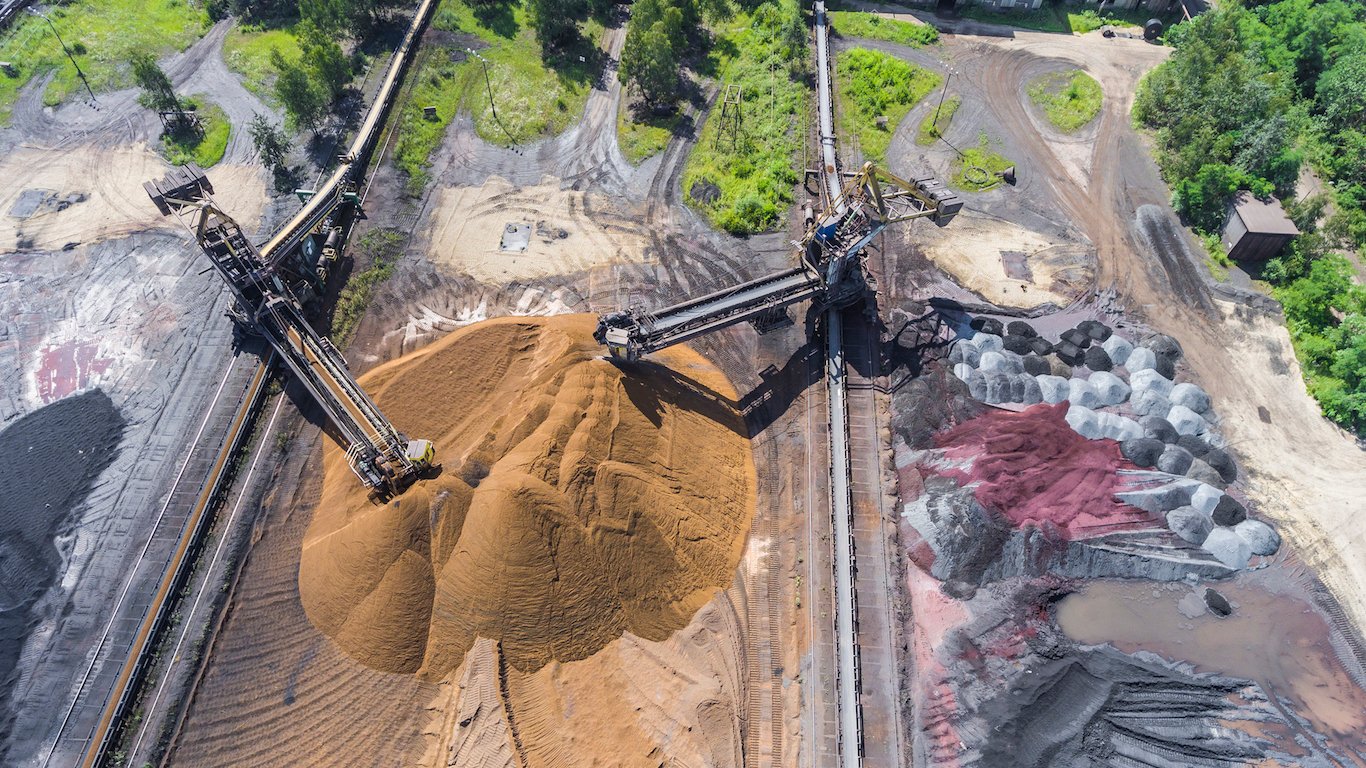
Source: Thinkstock
11. Mining
It is easy to see how drone use could grow in the next decade in mining outfits, both large and small. Several mining outfits are already employing drone technology. Some of the key areas are surveillance of the mining area, lease boundary inspection, inspection of safety zone, counting of vegetation in the reclaimed area, and profiling quarry and dump for volume calculations.
Driverless vehicles can also help improve mine safety by cutting down the risk of human errors caused by fatigue and stress.
[in-text-ad]
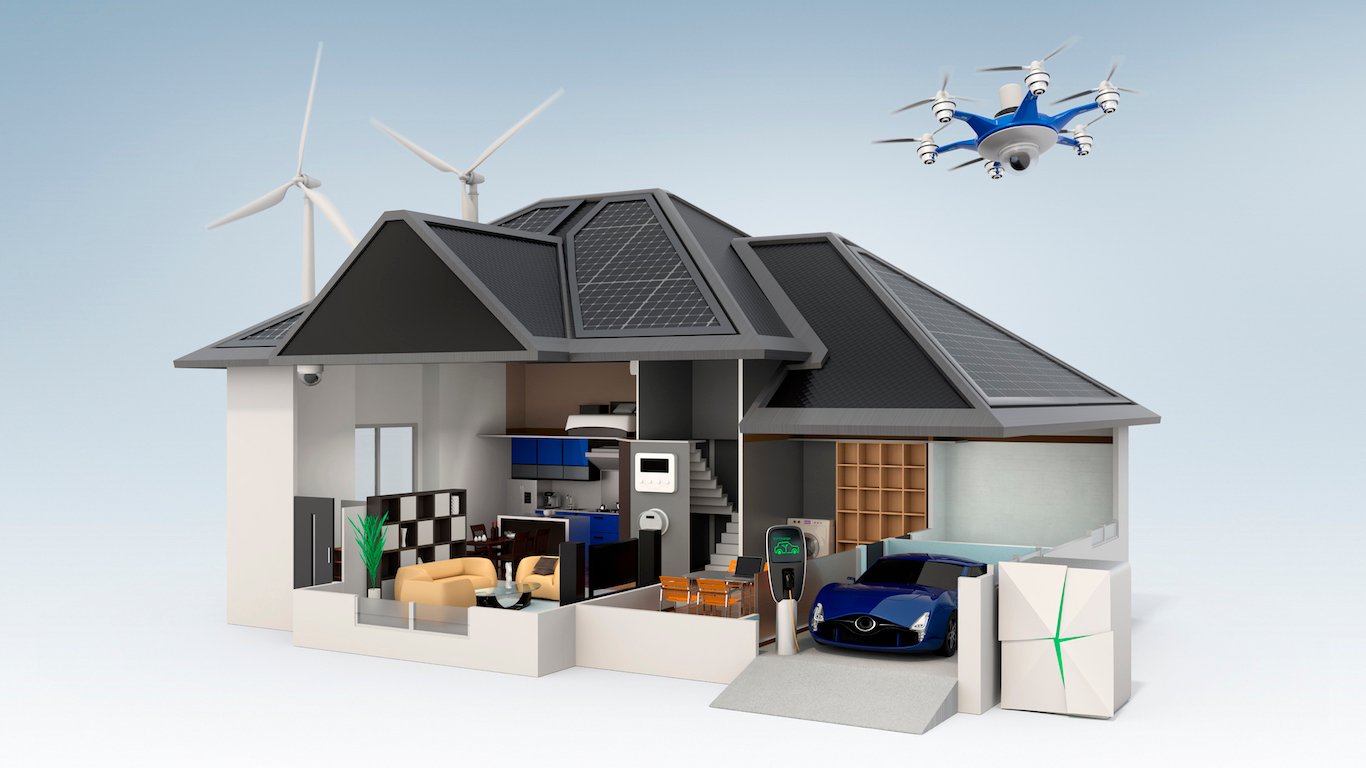
Source: Thinkstock
12. Home and business security
Millions of Americans already have alarm systems set up at home or their place of business. Drones may soon become more an important component in security systems. Sunflower’s Home Awareness System and Hawkeye have both launched security systems that incorporate drones with home security systems. Larger, campus-size corporations and organizations will likely increase incorporating drone technology rather than hiring more security guards.
It may not be far off in the future where a neighborhood watch group would be consisted of drones patrolling a neighborhood.
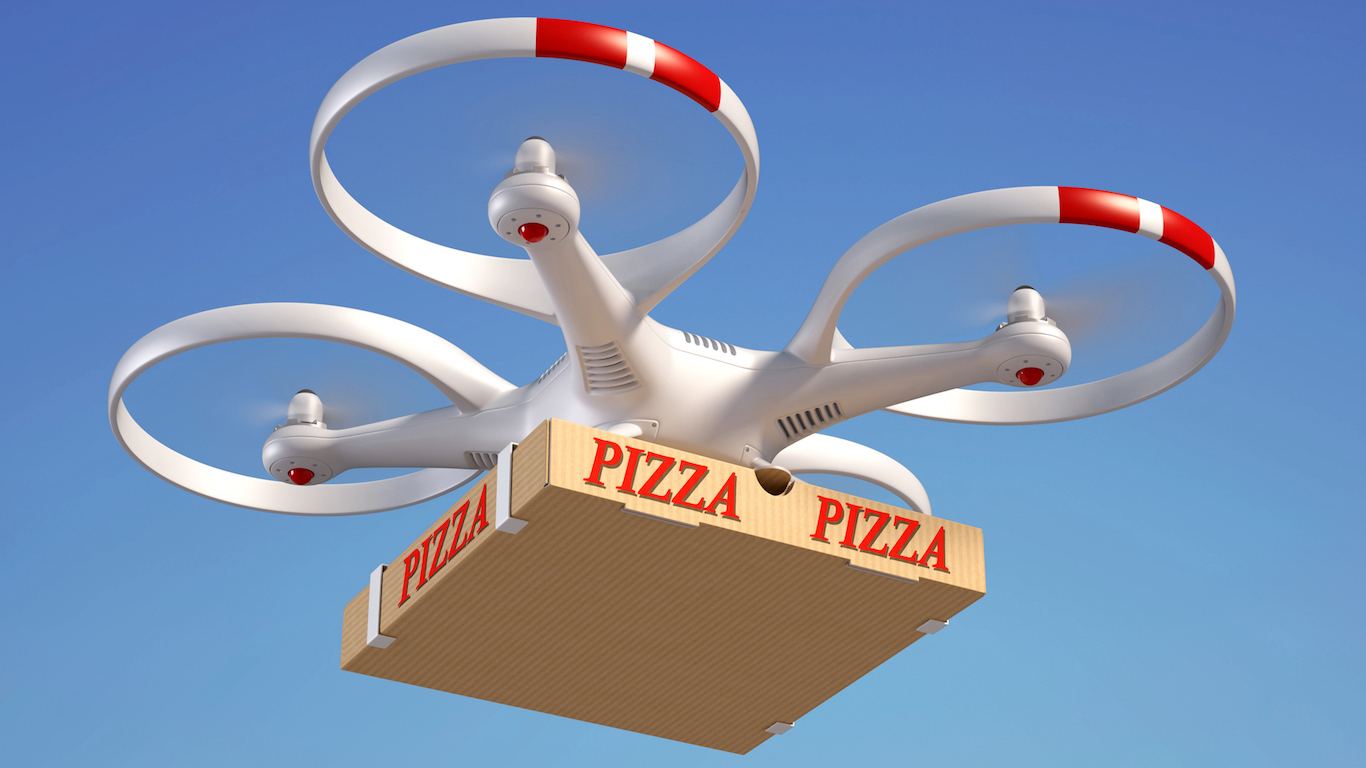
Source: Thinkstock
13. Food delivery
For many restaurants, food delivery is an integral component of their business model — a component that could soon be revolutionized by drones. Food delivery will have to overcome several obstacles, including keeping the food at the right temperature and FAA regulations./
Chipotle and Alphabet are currently trying this out on college campuses. Part of the experiment is finding the proper material to ship the food in that keeps it warm and safe from the elements.

Source: Thinkstock
14. Pharmacies
Many pharmacies may soon no longer have drug delivery services. One company called QuiQui aims to deliver pharmacy goods in the Mission District of San Francisco for a charge of just $1.00 on top of the goods being delivered. Expansion to other cities or nationwide appears likely. Sick people and the elderly often cannot physically leave home.
Drones are already in use in the health care sector in Africa. Rwanda is one of the world’s poorest countries, but it also has one of the first drone delivery services for medicine. Drones ship supplies to hospitals all across the country. This has potential in the United States, but there are more regulatory hoops to jump through.
[in-text-ad-2]
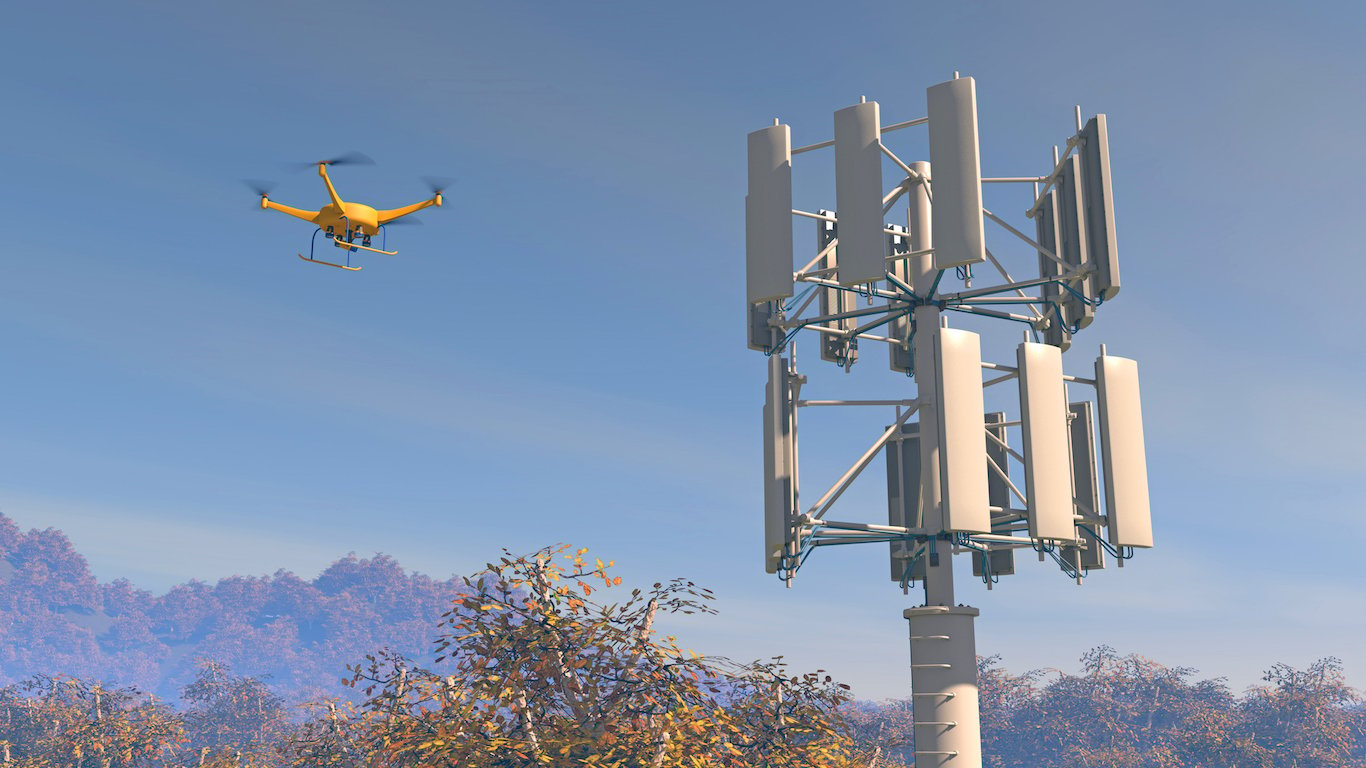
Source: Thinkstock
15. Data, telecom, and communications
The world is hooked on smartphones, social media and the internet. While the majority of Americans have access to the internet, less than half of the global population does. This is where drones could be useful. Rather than installing expensive data lines, building cell towers, and launching satellites, drones could serve as mobile towers.
AT&T is reportedly considering the use of “cells on wings” or “flying COWs” to boost cell reception. And Facebook is looking at UAV use to keep the internet up and running even in developing nations after natural disasters.

Source: Thinkstock
16. Oil and gas pipelines and utilities
Many operators of oil and gas pipelines, electric lines, and other utilities are already considering drone use to manage their assets. Some locations are hard to get to or are in too remote areas for an inspection. The U.S. power grid has very poor ratings, and some of the infrastructure is decades old. The same is true for several North American oil and gas pipelines. Drones can be used to inspect these lines at minimal expense compared to a helicopter crew.
Drone company FLIR currently markets drones with Aerial Thermal Imaging Kits. Such kits have a variety of uses, including measuring temperature data to cover large substations, transmission lines, and distribution lines.
[in-text-ad]
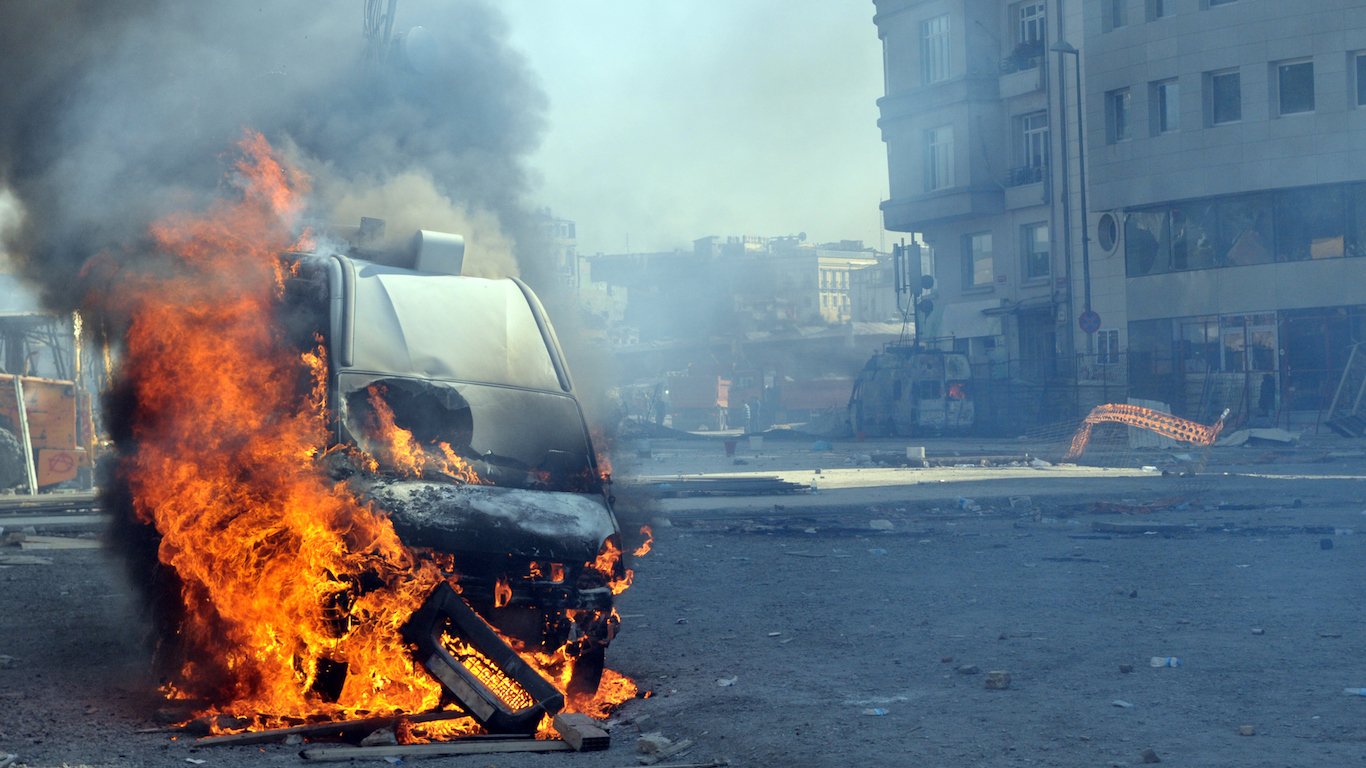
Source: Thinkstock
17. Criminal and terrorist use
As with any technology, criminals, smugglers, and terrorists are also looking for ways to use drones for their own purposes. Sadly, the bad guys are already using drones today. ISIS is reportedly using weaponized drones to carry out strikes on the Iraqi army in Mosul and other strategic locations. Drones have also been used by would-be thieves to case properties for potential.
Sponsored: Find a Qualified Financial Advisor
Finding a qualified financial advisor doesn’t have to be hard. SmartAsset’s free tool matches you with up to 3 fiduciary financial advisors in your area in 5 minutes. Each advisor has been vetted by SmartAsset and is held to a fiduciary standard to act in your best interests. If you’re ready to be matched with local advisors that can help you achieve your financial goals, get started now.
Thank you for reading! Have some feedback for us?
Contact the 24/7 Wall St. editorial team.
 24/7 Wall St.
24/7 Wall St.
